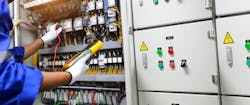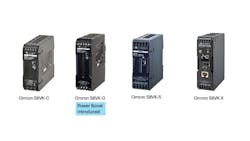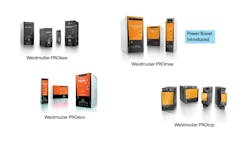Understanding the Cost Factors of Power Supplies
Aug. 1, 2024
4 min read
f you are purchasing a power supply from a reputable manufacturer, it’s safe to assume the output power quality is going to be similar (i.e., power factor, efficiency, ripple, etc.).
The main cost drivers of modern power supplies are:
- Current capacity.
- Power boost functionality.
- Environmental ratings (certifications and coatings).
- IoT capabilities.
Current capacity
This may be the most obvious cost driver of power supplies and it’s the most significant feature. Typical AC to DC 24V power supplies range from 1A to 40A in capacity. A 40A power supply will always cost more than a 1A power supply due to physical size, larger capacitors and higher quality components designed to handle the higher loads.
Power boost
Power boost is usually the first step up in price within a power supply lineup. This is because of the larger capacitors needed within the power supply to provide the power boost, which allows you to size a power supply based on the continuous device load rather than in rush peaks. In most cases, your power supply loads will be constant, but some devices that have in-rush current peaks are solenoids and DC motors. It’s important to note that the power boost feature is not the same for all manufacturers and the percentage and time of over-current will vary.
Environmental ratings and certifications
The next factor in the cost of power supplies relates to special coatings on the internal
components for wider environmental uses. Environmental conditions relate to protection against moisture, dust and corrosion. The temperature ratings tend to be similar across the power supply lines (e.g., Weidmuller ranges from -25°C to 70°C and Omron ranges from -40°C to 70°C)
The Omron S8VK-S and Weidmuller ProTop models, for example, have a conformal coating on the PCB that allows them to be in used in moist, dusty and corrosive environments without malfunctioning or limiting the life expectancy.
Certifications will also add cost to power supplies due to the testing costs of achieving the specific certification. UL and CE are standard to find on power supplies from reputable manufacturers but certifications like explosion and marine-rated will come with an added cost.
IoT capabilities
The communication capabilities of power supplies are a newer offering, but they are seeing
increased interest. This feature allows operators to monitor the power consumption of their control panel as well as remotely diagnose power supplies and adjust configurations. Omron’s IoT power supply, for example, also provides data of its life expectancy that can be used for predictive maintenance.
The main use case I’ve seen for these power supplies is when factories require power consumption data from each machine on the floor. Power supply manufacturers typically only include this in the highest-performing power supplies, which leads them to be the most expensive power supply type.
Life expectancy and MTBF
Mean time before failure (MTBF) is a statistical measure of the average time before failure that can be applied to many industrial automation devices as a measure of reliability. This is calculated by taking the inverse of the sum of all internal components' failure ratios. Life expectancy, on the other hand, is the expected life of a power supply at normal operating conditions. The reason these two values are so different is because the life of a power supply is determined by the internal electrolytic capacitors.
For example, an MTBF of 700,000 hours for a power supply equates to 79.85 years before failure. This number is not useful when selecting power supplies when a typical life expectancy is 10-15 years.
Life expectancy is not a common part of a spec sheet, but MTBF will always be noted.
Bottom line
Just because a power supply is more expensive doesn’t mean you will get higher quality output power. The price of power supplies is determined by added features sch as power boost, special environmental ratings/certifications and IoT Capabilities.
When choosing a power supply determine if any of these features are needed for the application before selecting a higher cost option.
Peter VanCamp is an automation sales engineer at system integrator MSI TEC. He has a bachelors in electro-mechanical engineering technology and a master’s in mechanical and manufacturing systems integration with a focus in robotics and automation from Rochester Institute of Technology.
About the Author
Sign up for our eNewsletters
Get the latest news and updates

Leaders relevant to this article:



